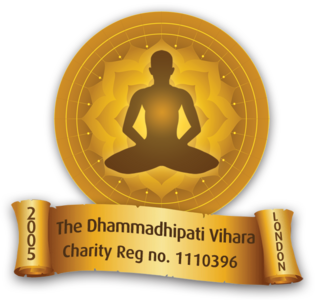Postures / Eating / Daily Activities
Don’t forget to watch yourself from the time you wake up until the time you fall asleep. Whenever you notice that you have not been mindful, check the state of your mind. Try to feel what mood the mind is in. Are you relaxed or not? Then start by observing some obvious sensations on any part of the body. The meditating mind must be simple, not complicated. You can use any sensation as the main object to bring the mind to the present moment. The main or primary object helps you to keep the mind aware, in the present moment. It is something you can always go to when you are not sure what to observe. However, you do not have to stay with that main object all the time. It is perfectly alright if the mind’s attention moves to other objects such as sensations, hearing, even a wandering mind, as long as you are aware that the mind is now aware of these new objects. It is also fine if it knows several objects at the same time.
In sitting meditation both the mind and the body should be comfortable. Keep checking whether you are relaxed or not. If there is tension, first relax, then check your attitude. If there is resistance, feel the resistance and observe it. Be simple and just watch what is happening. Watch whatever the mind is aware of – your posture, bodily sensations, your breathing, feelings and emotions, the wandering or thinking mind, hearing or smelling. If you are sitting comfortably on your cushion and are busy thinking about something very important without even realizing that there is thinking going on, you are not meditating! When you suddenly realize that this is happening, do not worry about it. Relax, check your attitude, i.e. start this whole exercise again from the beginning.
Be aware that you are walking whenever you walk. You do not need to walk fast or slowly, just walk at a natural pace. You can watch what the mind pays attention to, or just have an overall feel of the sensation of your whole body walking. If the mind settles on particular sensations or body movements, that is alright too. But remember, you do not have to focus on one object continuously; in fact you should avoid doing this if it makes you tense. You can also notice hearing and that you are looking to see where you are going. Try not to look around as it will distract you. However, once your mindfulness has become more continuous, you need to learn to be aware whenever you look at something. This ability to be aware of seeing comes with practice. As long as you are not skilful at this, seeing will tend to distract you, make you lose your mindfulness.
When you do standing meditation you can follow the same basic principles as in sitting and walking meditation. Keep checking for tension!
When you eat, do not hurry. When you are eager to eat you will lose mindfulness. So if you become aware that you are eating quickly, stop eating and watch the eagerness or the feelings that accompany it for a while. You need to be reasonably calm to find out what the process of eating is like. Experience the sensations, the smells, the tastes, the mental states, what you like and dislike. Also notice bodily movements. Do not worry about observing every detail, just remain aware of your experience.
Your personal time and activities are also very important times to be mindful. You tend to lose your mindfulness most easily when you are on your own. Are you aware when you close
doors, brush your teeth, put on your clothes, take a shower, go to toilet? How do you feel when you do these activities? Do you notice what you like and what you dislike? Are you aware when you are looking at something? Are you aware when you are listening to something? Are you aware when you have judgments about what you see, hear, smell, taste, touch, think, or feel? Are you aware when you are talking? Are you aware of the tone and loudness of your voice?
It is important that you regularly check whether you are relaxed or tense; if you don’t, you will not be aware whether you are relaxed or getting tense. When you find yourself tense, watch the tension. You cannot practise when the mind is tense. If you get tense, it indicates that your mind is not working in the right way. Inquire into the way your mind has been working. If you do this often enough during the day you may prevent a buildup of tension. With practice you may also become aware of the reason for your tension. Do not forget to observe tension! If you become tense easily, do lying down meditation once a day. This will also help you to practise awareness in every posture you are in.
